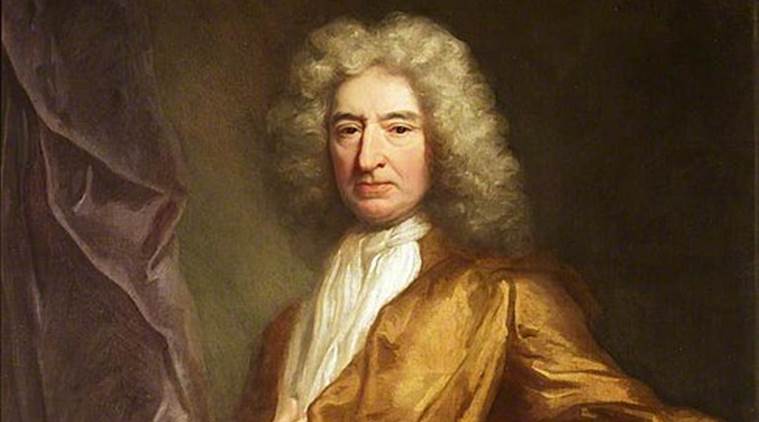 17th-century slave-trader Edward Colston. (Wikimedia Commons)
17th-century slave-trader Edward Colston. (Wikimedia Commons)
Black Lives Matter protestors at Bristol in England toppled an 18-ft-high statue of a 17th-century slave-trader, Edward Colston, and threw it into the river. The statue, erected more than a century ago, commemorated his philanthropy. From today’s perspective, what he did with his money pales into insignificance compared to how he came by it.
For 400 years, slavery had the sanction of the church, royalty, merchants, scientists, and the public. Prince Henry the “Navigator”, who initiated the exploration of the African west coast, was appointed the Grand Master of the well-endowed Order of Christ by the Pope. The Order became the prince’s power base, providing him with financial resources and disciplined manpower.
In 1441, a handful of African natives were captured and brought to Portugal. In 1444, an expedition under the banner of the Order of Christ returned with a cargo of 235 slaves. One-fifth of the number were handed over to the church, which converted them to Christianity and sold them.
England made a modest beginning in the slave trade in 1562 when Sir John Hawkins sent 300 slaves from Africa to an island in the West Indies called Hispaniola. His young relative, Francis Drake, began his maritime activities under his guidance. In his adventures, Hawkins had the support of Queen Elizabeth who was making a significant statement when the 1581 ceremony to confer a knighthood on the navigator, sea-pirate, slave-runner and patriot, Sir Francis Drake, was held not in her palace but on his ship, The Golden Hind.
In 1660, King Charles II gave a royal charter to the Company of Royal Adventurers Trading to Africa. Three years later, its renewed charter explicitly mentioned slave trade as one of its activities. By this time, England had acquired colonies in St Kitts, Barbados and Jamaica in the West Indies, and Maryland and Virginia in North America. In 1672, the company made way for Royal African Company (RAC), which lasted till 1752. These two companies included as stockholders members of the royalty, other influential persons, the London commercial establishment, and Colston. Between 1672-1713, RAC bought 1,25,000 slaves on the African coast of which 1,00,000 reached English West Indies where they were sold. In 1660 itself, Charles II issued a royal charter to the Royal Society also. The Society was described as a twin sister of the slave company. It owned stock in it and held overlapping membership with it. The exploitation of slave labour and the advancement of natural history proceeded hand in hand. Finally, England banned slave trade in 1807, and abolished slavery in 1833. By this time, England was well-entrenched in India and its economy had become industrial.
The ban on slave trade did not mean its immediate banishment. In 1830, Sir Charles Malcolm, superintendent of the Bombay Marine, decided to meet the shortage of seamen in the Bombay Marines (later Indian Navy) by importing manpower from the east coast of Africa and the nearby islands. These ports were already notorious as “the great emporia of the slave trade”.
Commander John Croft Hawkins was directed to bring “as many able-bodied lads as you can, in age from twelve to eighteen, free from all disease and bodily infirmity, and of that compact symmetry best calculated for seamen”. He bought about 30 Negro boys, some of whom were “of a more tender age than was authorised”. Two of the boys stated before the magistrate that they had not received any money but had been ordered by their master to board the ship to Bombay.
Hawkins was held guilty of slave trade, imprisoned, and ordered to be transported to Australia for a term of seven years. In the eyes of the establishment, he had done nothing wrong. He was seen as the victim in the warfare between the judiciary and the government. From Bombay, he was taken to Madras where he was feted as an officer and a gentleman. On reaching Jakarta, the captain decided that the ship would change course and proceed to England. In London, the King gave a free pardon to Hawkins. The East India Company compensated him financially and took him back into service where he flourished.
Slavery treated the enslaved as sub-human, nothing more than muscle power. Banning a practice through legislative action does not affect that mindset. Changing it requires coordinated action on legislative, executive, social, and economic fronts. When the extant framework is being challenged, insisting on law and order is tantamount to preserving and strengthening the discredited framework.
Kochhar is author of The Vedic People: Their History and Geography